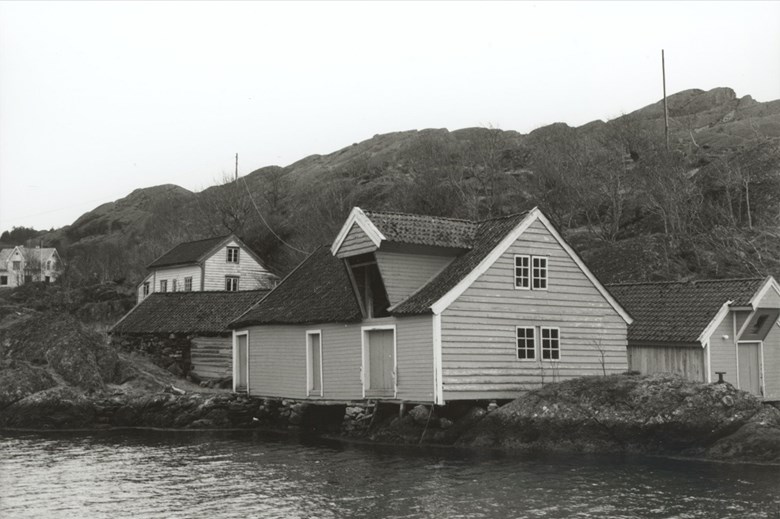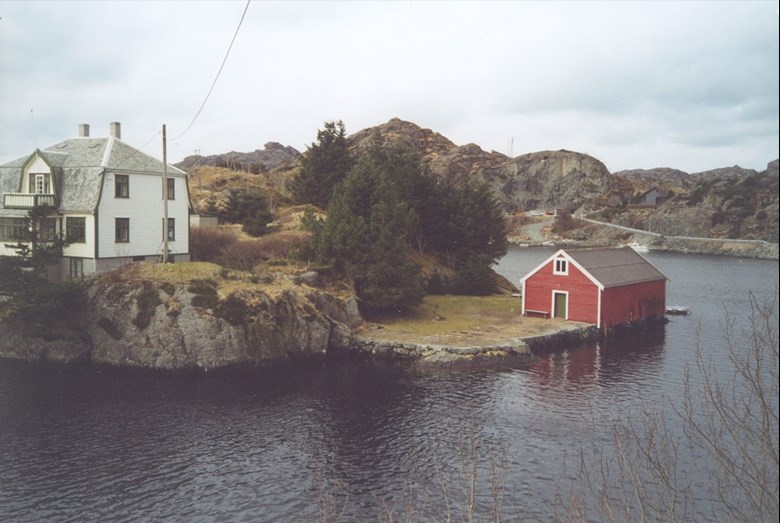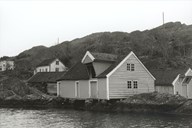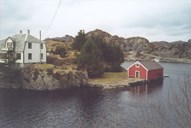Salteries everywhere
During the herring fishing period which came to an end around 1870, the coastal areas from Kinn to Selje in particular, had over the years become well prepared to receive the large quantities of herring. In 1860, there were 368 salteries between Selje and Bulandet. On the island of Kinn alone stood 49. On the small islands of Nærøyane further west, there were 36.
The buildings were of varied size and quality. Some were so big that they could take 1500 barrels. Often the salters slept in the loft. Individuals and companies owned the salteries. When the crash came, the owners suffered most financially. The buildings were weather-exposed, some of them in places with no permanent residents.

Ruin when the herring fisheries failed
Without means for maintenance, disrepair came quickly. Many owners had taken up loans and were bankrupt. Some lucky ones were able to sell off a house here or there.
During this period, many salteries were moved south. The buyers were in a position to beat down the price of sea houses to reasonable levels, and these buildings lasted a while. The floors especially, but also the floor beams, were so impregnated with brine and salt that no parasites would come near the woodwork in generations. And the building materials were strong, with solid knee brackets which locked the building firmly against all kinds of strain.
Solid, useful sea houses
To the fishermen, these houses were attractive. They stood well the weight of nets and seines in summer and in winter. With a cable winch in an extended gable, in the gable wall or in the long wall, it was easier to handle equipment and fish.
The salteries were built with care, most often with double walls and smooth trimming in the interior, which made the house more comfortable. The salteries which were bought "as they were", and rebuilt in the same shape, may have this trimming intact even today. Examples are the sea warehouse and the boathouse at Steinsundholmen. But these houses were built to be used as salteries.

From Kinn and Batalden
Those who wanted a sea warehouse could often not buy too large salteries. Therefore, the largest salteries were dismantled and sold piecemeal. The buyer could then pick the materials he needed and could afford. Moreover, he could adapt his building to the foundation, with doors and perhaps windows. Simple exterior walls, with wooden boards alone, were common.
Older people often mention Kinn and Batalden when they talk about the origin of the saltery. The Saltskårbua is believed to be a dismantled saltery from Kjempenes at Bulandet. Stølen and Tveranger have sheds or warehouses of materials from Kinn, Steindalen from Batalden.
The salteries, characteristic houses
The salting of herring was carried out in many places in Solund as well, before and after the turn of the 19th century. Some salted the herring from their own catches. This was common in summer, but happened in winter also. The speculators in Bergen sent barges with barrels and salt. The herring was salted on shore and then taken onboard. In the same way, considerable quantities were put in barrels, in the west and in the east over the years. In sheds, warehouses, and boathouses women and men have bent over the barrels. But when we speak of salteries, we think of sea houses which have been taken down in the westernmost salting harbours.




